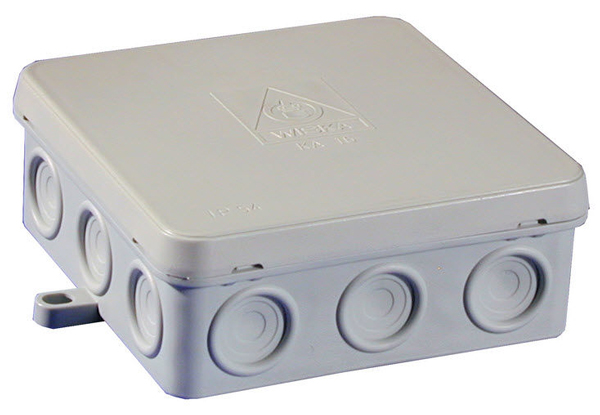There’s nothing worse than having to handle a bunch of cables, especially when you don’t know how. And not to even mention the mess they create and the horror you have to face when one of them suddenly unplugs and you have no idea where it came out from. There’s a solution to this problem, a junction box.
What is a junction box?
A junction box works as a container for electrical connections and serves to hide them out of sight and potential tampering. These can be made to form part of a wiring system in a building, or for surface mounting. The ones designed to form part of a wiring system in a building would normally be a metal or plastic part of an electrical conduit or thermoplastic-sheathed cable system. The ones designed for wall mounting would normally be placed on ceilings, under floors or will be concealed behind an access panel in buildings, either domestic or commercial.

What is a junction box used for?
Beside the main purpose which is to serve as a container for electrical connections, a junction box can be used to connect more sockets to circuits, add more lighting points or extend certain circuits. In general, these boxes are used as a way of transferring power from one source to somewhere else. Junction boxes are rated in amps, and it’s very important to choose the right box for the right job. Have in mind that a ring main and a radial circuit will need a 30 amp junction box, while a lighting circuit will do fine with a 20 amp junction box.
How to wire a junction box?
The first and most important thing to pay attention to is that the power is off, otherwise the process itself is quite simple.
- Fix the junction box solidly to a firm surface that can be easily accessible. This is a must according to the regulations. What does accessible mean? It means you can place the box anywhere (on the ceiling, floors, or roof voids) as long as an electrician or a builder can easily access it when needed.
- Check whether your box is ring main or radial circuit. There are special rules for these cases and you need to follow them carefully. One such rule is the length of the cable you can use in both circuits and long spurs. You shouldn’t exceed this limit, since these circuits are designed to support a certain amount of energy, and if you exceed it, more heat is generated than it should and as a consequence you get burned cables or greater damage.











